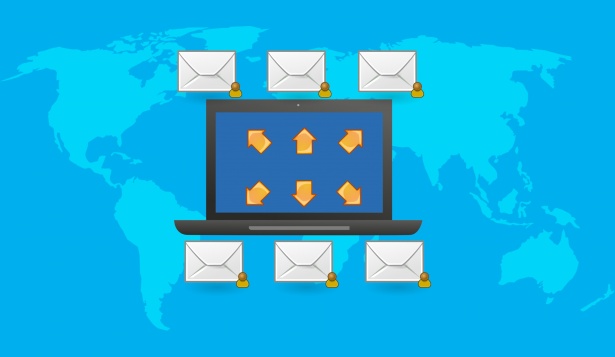

As a nonprofit organizer, you likely manage countless responsibilities, including daily operations, staffing and volunteers, public relations, and community events. Fundraising is also a vital aspect of your role and has a significant impact on your organization’s long-term success. Donor outreach may seem like an uphill battle, but email campaigns can scale your efforts to new heights.
Using emails for fundraising efforts is a highly effective method of engaging with donors and successfully obtaining additional funds. According to research by Neon One, 48% of donors prefer email over any other type of nonprofit communication. Before you lose yourself in brainstorming for your next donor outreach campaign, start with the foundation of success: email deliverability. After all, even the most strategic campaign messages are irrelevant if your donors never receive them.
What you’ll discover in this article
- What is email deliverability?
- Why email deliverability matters
- How to ensure email deliverability for donation campaigns
What is email deliverability?
Email analytics includes a range of metrics, from click-through rate (CTR) to spam. But the most important one is email deliverability—whether your emails successfully land in recipients’ inboxes.
This metric should not be confused with successful email delivery, which happens when an email server accepts a message but doesn’t differentiate between messages sent to spam, promotions, or any other folder. With email deliverability, the focus is on emails that make it to a donor’s primary inbox.
Why email deliverability matters
Email deliverability is a crucial concern for nonprofits (and any other organization) for two reasons:
Expanding your donor outreach
This reason is self-explanatory: If your emails don’t reach recipients, you can’t expand your donor outreach or build relationships with your supporters. People who care about your cause will not know you’re trying to engage with them. They may miss out on donation appeals or other opportunities, like volunteering, sharing, and staying up-to-date on your nonprofit’s latest news.
Maintaining a good sender reputation
The second reason email deliverability is essential relates to your sender reputation. One of the primary functions of an email service provider (ESP)—like Gmail or Outlook—is to protect recipients from spam or security risks. To do so, they evaluate a sender’s reputation. ESPs may block or send your messages directly to spam if you have consistent email deliverability issues.
How to ensure email deliverability for donation campaigns

Now that you understand email deliverability, it’s time to take steps to ensure your messages arrive successfully in donors’ inboxes. There are many strategies to improve your email deliverability metrics. It is important to address all concerns for optimal results.
Authenticate your domain
Successful deliverability often lies in the legitimacy of your domain. Therefore, the first crucial step towards email success is domain authentication. This recommended approach demonstrates to ESPs that your nonprofit is a verified and reliable sender of emails, not a scam artist.
There are a few components to domain authentication:
DKIM
Domain Keys Identified Mail (DKIM) is like a seal of approval for your emails. DKIM adds a custom signature to your email headers. ESPs check if this digital key matches your domain records, verifying that you’re a legitimate sender and your messages haven’t been tampered with in transit.
SPF
Email spoofing is a common email fraud tactic that attempts to trick recipients into believing their emails are from a trusted source. Spoofers may imitate your organization with forged email addresses. The Sender Policy Framework (SPF) protects recipients against spoofing by verifying the sender’s IP address, detecting forgeries, and blocking falsified emails.
DMARC
Message Authentication, Reporting and Conformance (DMARC) uses DKIM and SPF records to increase email authenticity. DMARC verifies that your messages have passed the DKIM and SPF checks. If all is well, your email is delivered. But if your messages fail those steps, DMARC tells the ESP what to do with the message. You can configure your DMARC to reject unverified emails or quarantine them in the spam folder.
DNS
Domain Name System (DNS) records are the backbone of authentication, where senders publish their approved IP addresses, digital keys, and other verifiable information. ESPs use your DNS records to perform DKIM and SPF checks, so establishing your DNS is the first step toward email deliverability.
Out of your element with domain authentication? Have no fear: SendWP specializes in configuring SPF, DKIM, DMARC, and DNS to help achieve 99.5% deliverability rates.
Domain warmup
When you start a donation campaign, sending lots of emails to every supporter in your database is tempting. But this might not be a great tactic, depending on your sending history.
If your nonprofit is new or you haven’t sent many emails in the past, ESPs may interpret a large outpouring of messages as spam. You’ll want to start with a domain warmup to improve email deliverability. Think of your nonprofit’s IP address like a credit score: You must build credibility and authenticity over time.
Start slow and small. Send fewer emails to a smaller recipient list, preferably donors and supporters who actively engage with your organization. Once you’ve established your sender reputation, you can scale your donor outreach efforts.
Give recipients an unsubscribe option
Even if donors subscribe to your email lists, they may change their minds and want to discontinue communication. You must give them the freedom to make that call. Include clear “unsubscribe” links in all emails. This not only lessens frustration but also reduces your spam rate.
If recipients can’t unsubscribe or experience annoying barriers to unsubscribing, they’re more likely to mark your donation campaign emails as spam. Over time, this negatively impacts your IP reputation. ESPs may start sending your messages directly to the spam folder or blocking them altogether.
Be sure the unsubscribe button is visible and easy to click. (Check out these best practices for unsubscribe links.)
Avoid spammy language
Certain words and phrases are closely associated with spam and scam emails, including “Take action now!” and “Urgent!” Using this language style—in subject lines or body copy—can trigger the spam function in your recipients’ inboxes. If the messages reach the primary mail folder, spammy phrases can also damage your relationship with potential donors.
Use language that’s straightforward, relevant, and engaging for the best results. Above all, donors want an authentic connection with your organization. Talk to them like trusted friends to build lasting relationships (and secure donations to your worthy cause).
Don’t use purchased email lists
Your goal is to expand donor outreach, so you may be tempted to buy email lists for maximum visibility. But this is unhelpful for several reasons.
First, no one likes unsolicited email. If a recipient has never heard of your nonprofit or didn’t subscribe to your campaign emails, they will likely mark them as spam. This harms your organization’s reputation. Plus, an unsolicited email is a bad first impression.
Second, there’s no guarantee your purchase will lead to more donations. The addresses may be invalid, or your cause isn’t relevant to the recipients. Purchased emails often contribute to terrible email metrics.
Lastly, you may be violating the law. In some countries, sending unsolicited emails to people without explicit consent is illegal and can result in severe penalties. Make sure you’re following legal compliance (like the CAN-SPAM Act in the U.S. and the GDPR in Europe).
Keep your lists relevant
Your donor email lists can become cluttered over time. Your recipients may have experienced a major life change—like moving to a new country or getting a new job—leading them to stop engaging or change their email addresses.
Keep your email lists relevant by periodically cleaning them up and removing inactive subscribers (called a “sunset policy” in the email universe). This strategy boosts your email deliverability rate and improves other metrics like click-through. Sunset policies can also reduce your spam rate.
Donor segmentation

Donation campaigns are most successful when they’re relevant and personal. No one likes generic mass emails—particularly if they’re considering making a financial gift. Personalized language can enhance your emails, but donor segmentation goes even further.
When you group your email recipients according to criteria like location and donation history, your messages become more relevant. For example, if you’re an organizer for a national nonprofit, supporters on the West Coast may not want to receive campaign messages for East Coast projects. Similarly, if you have supporters who’ve historically donated small amounts in the $10–$25 range, they may ignore emails about sponsorship opportunities for a pricey benefit concert.
By segmenting your donors into applicable lists, you reduce spam rates and unsubscribes, therefore improving email deliverability.
Use a reliable email service
A reliable email service takes many aspects of email deliverability out of your hands, giving you more time to focus on nonprofit management and community outreach. SendWP is an incredible tool for your nonprofit’s transactional emails—messages triggered by donor actions. For your nonprofit, this could include donation receipts, confirmations when supporters subscribe to your e-newsletter, and more.
The hallmark of SendWP’s service is deliverability. We help ensure a 99.5% deliverability rate by configuring your domain authentication and following other email best practices. Setup takes seconds—just three clicks!—and we’re always available to offer support. With our personalized curation, you can easily access insightful reports and analytics to closely monitor your transactional email metrics.
Enhance email deliverability for donation campaign success

Your efforts as a nonprofit organizer bring immeasurable value to not only your community but also the world. When running successful donation campaigns, don’t let an avoidable roadblock like poor email deliverability stand in your way.
By following the best practices outlined above and using a reliable, highly regarded transactional email service like SendWP, you’ll be well on your way to reaching potential donors and securing gifts that fund worthy causes. Get started with SendWP today!
Let SendWP Handle Your Emails!
Say goodbye to email delivery headaches with SendWP. Our efficient and reliable solution ensures that your important messages reach their destination on time, every time.
